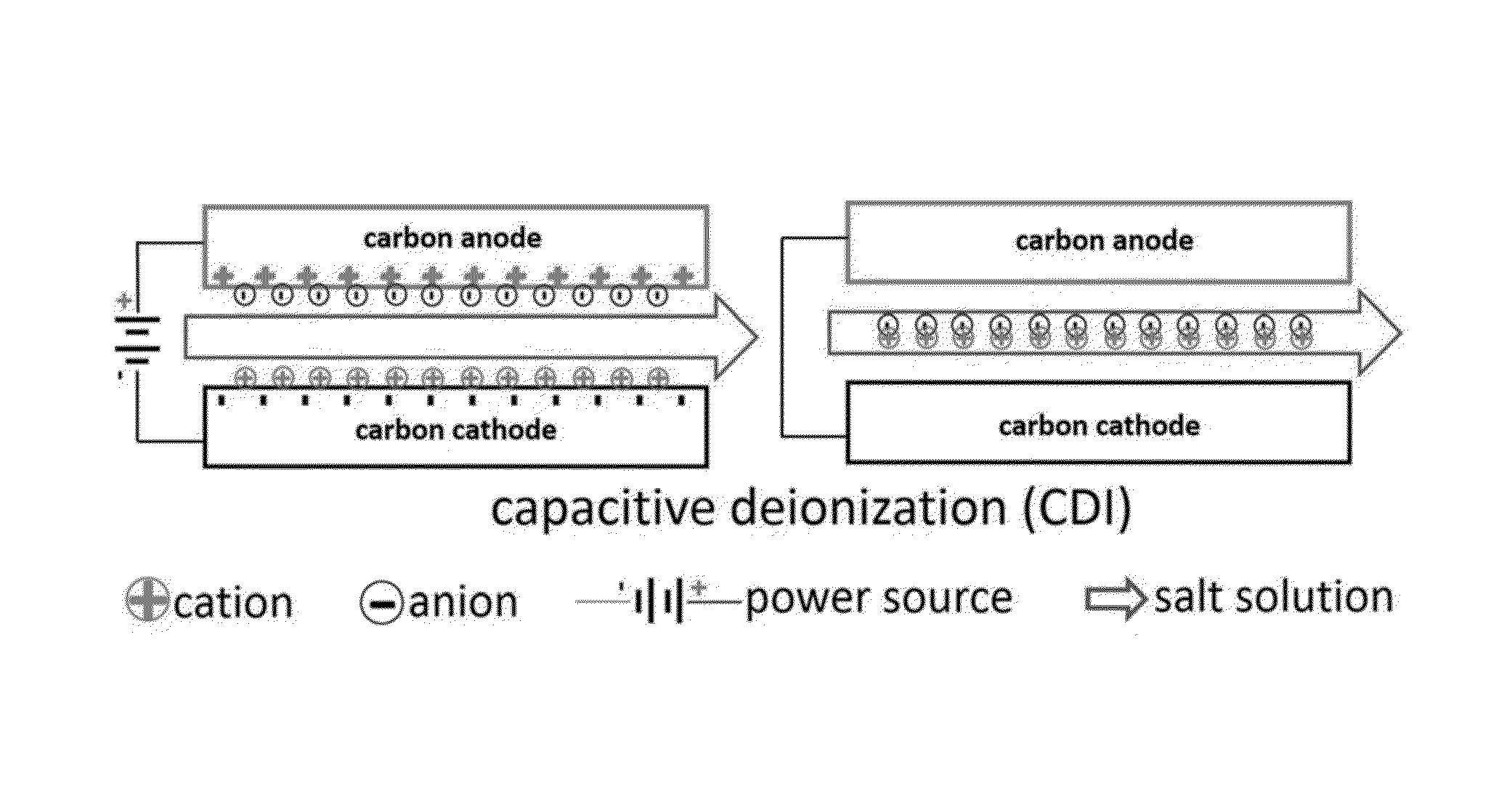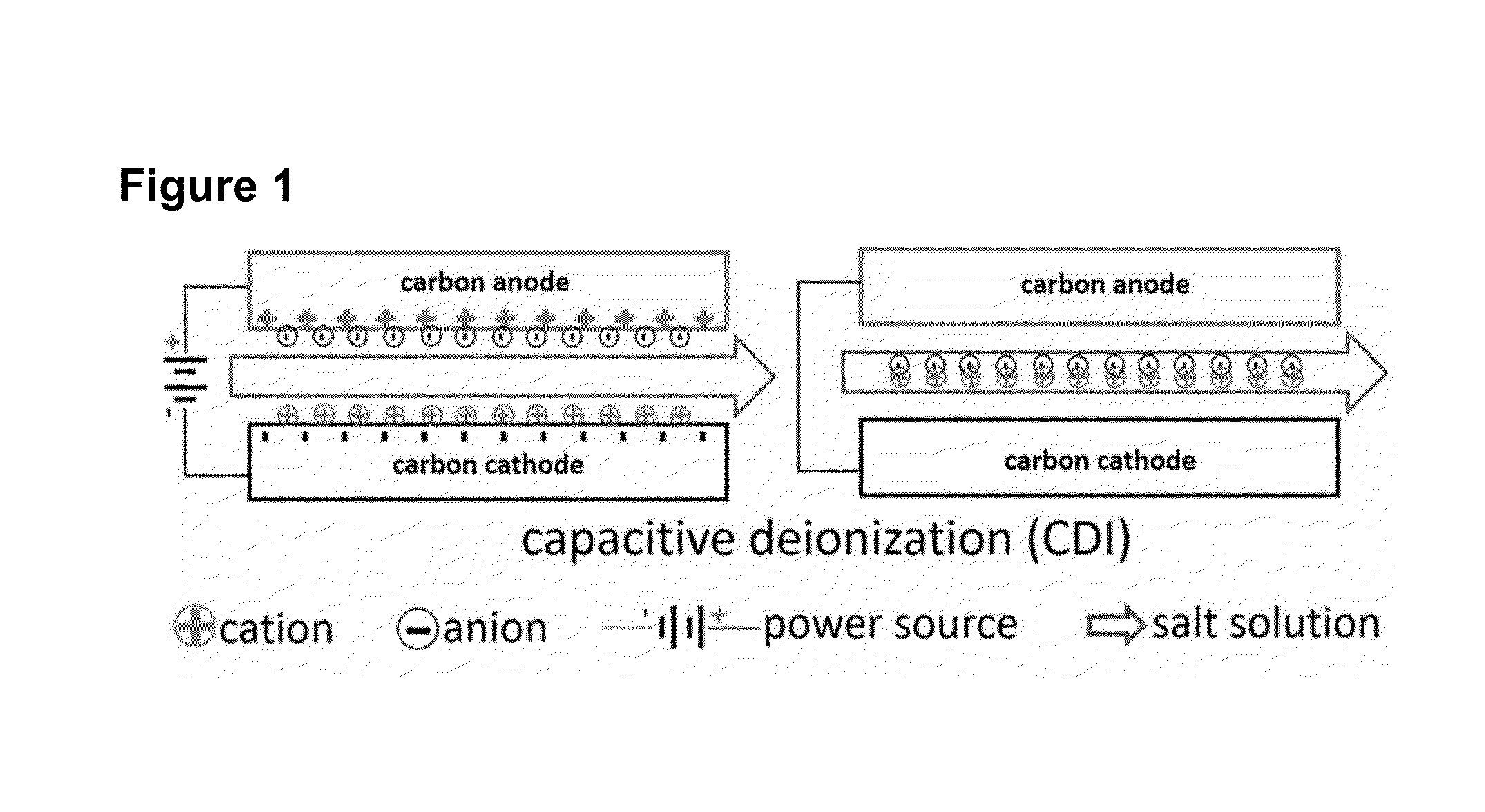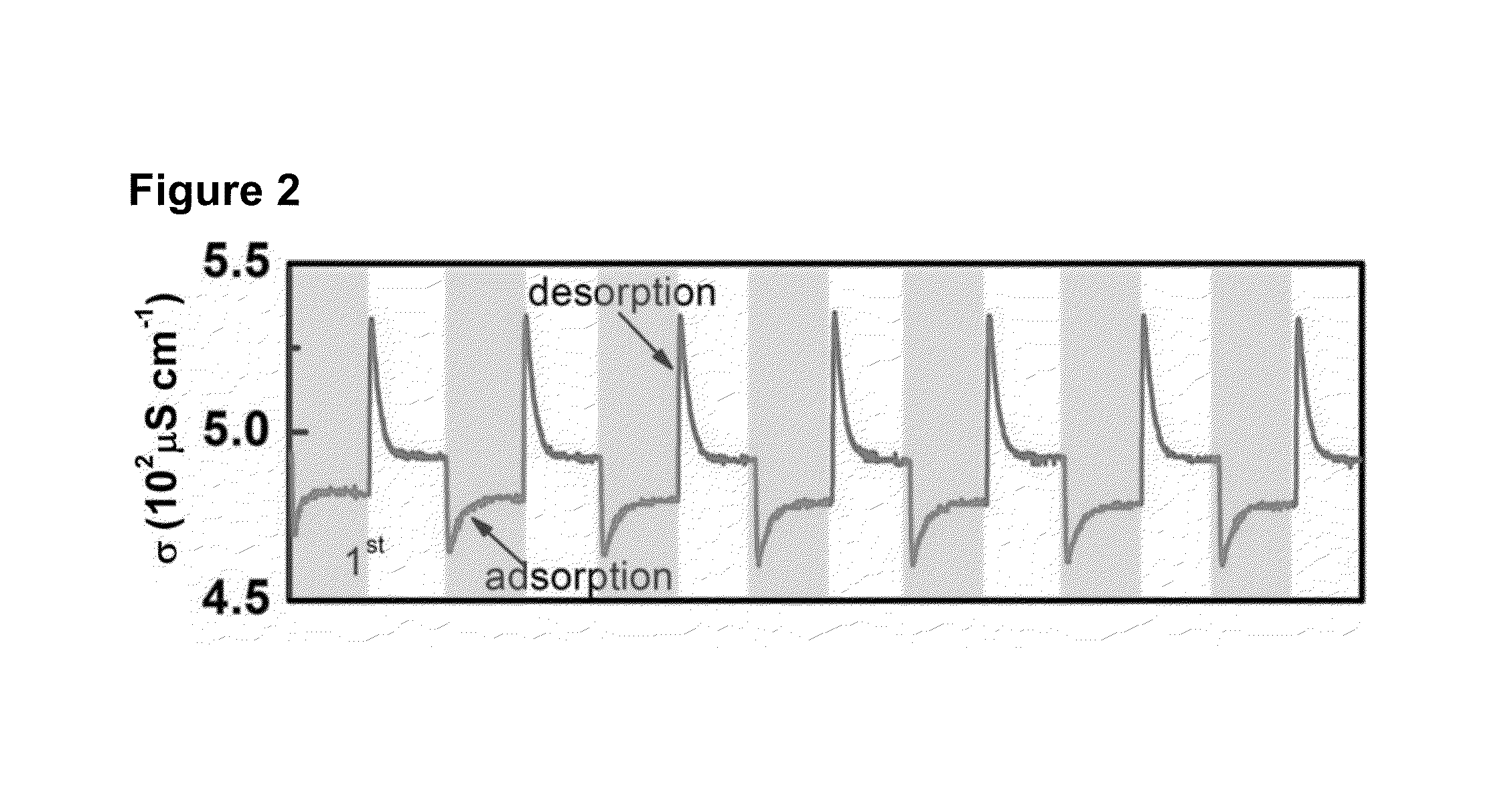Potential of Zero charge-Based Capacitive Deionization
a capacitive deionization and zero charge technology, applied in the direction of centrifuges, separation processes, filtration separation, etc., can solve the problems of difficult separation of salt content by conventional filtration methods, high energy consumption of methods, and many other dissolved ionic compounds, so as to achieve the effect of fine adjustment of deionization
- Summary
- Abstract
- Description
- Claims
- Application Information
AI Technical Summary
Benefits of technology
Problems solved by technology
Method used
Image
Examples
Embodiment Construction
[0108]Shown in FIG. 6 is a cyclic voltammogram (CV) of a pristine carbon xerogel electrode in N2 deaerated 4.3 mM NaCl solution with a scan rate of 1 mV / s. CVs differ from linear sweep voltammetry in that after the set potential is reached in a CV experiment, the working electrode's potential is ramped in the opposite direction to return to the initial potential. The current at the working electrode is plotted versus the applied voltage (i.e., the working electrode's potential) to give the cyclic voltammogram trace. The CV trace is typically a hysteresis, even for perfectly reversible mechanisms. Even reversible couples contain polarization overpotential and thus display a hysteresis trace when potential is ramped up from negative to positive and then ramped down from positive to negative, passing through an initial potential. This overpotential emerges from a combination of analyte (e.g., ion) diffusion rates and the intrinsic activation barrier of transferring electrons from the e...
PUM
| Property | Measurement | Unit |
|---|---|---|
| working voltage | aaaaa | aaaaa |
| flow rate | aaaaa | aaaaa |
| charge | aaaaa | aaaaa |
Abstract
Description
Claims
Application Information
 Login to View More
Login to View More - R&D
- Intellectual Property
- Life Sciences
- Materials
- Tech Scout
- Unparalleled Data Quality
- Higher Quality Content
- 60% Fewer Hallucinations
Browse by: Latest US Patents, China's latest patents, Technical Efficacy Thesaurus, Application Domain, Technology Topic, Popular Technical Reports.
© 2025 PatSnap. All rights reserved.Legal|Privacy policy|Modern Slavery Act Transparency Statement|Sitemap|About US| Contact US: help@patsnap.com



